Imaging Projects
In this blog, I will share the results of all of my imaging projects. The newest will be at the top and the oldest will be further down the stack. Going back in time here is interesting - some of my early stuff was pretty rough - but I did not see it that way at the time - I was thrilled to get anything back that looked like an image! Hopefully, you will see how my work has progressed with time!

Barnard 33 & NGC 2024 - The Horsehead and Flame Nebula - 6 hours in HaLRGB
A new Orion classic from Whispering Skies Observatory: B33 (the Horsehead Nebula) silhouetted against IC 434, paired with NGC 2024 (the Flame Nebula) and its intricate dust lanes. Captured October 27–28, 2025 using LRGB + Hα for a total of 5 h 59 m 30 s, this project emphasizes clean star color and high-contrast dust structure while preserving the region’s faint, extended nebulosity.

Messier 42/43 – The Great Orion Nebula - 6.35 hours in HaLRGB
Orion’s sword is one of the most famous regions in the night sky, and for good reason. This widefield take on M42/M43 and the Running Man blends short and longer RGB/L exposures with H-alpha to balance the bright core against the faint, sculpted outer nebulosity—an image that showcases both the beauty and the ongoing starbirth of our nearest major stellar nursery.

SH2-124 - The Hidden Nebula (~14.2 hours in SHOrgb)
SH2-124 is a rich region of stars, dark dust, and emission nebulae located about 8,500 light-years away in the constellation of Cygnus.
This image is the result of 14.2 hours of SHOrgb data collection with my small Akskar FRA400 telescope platform.
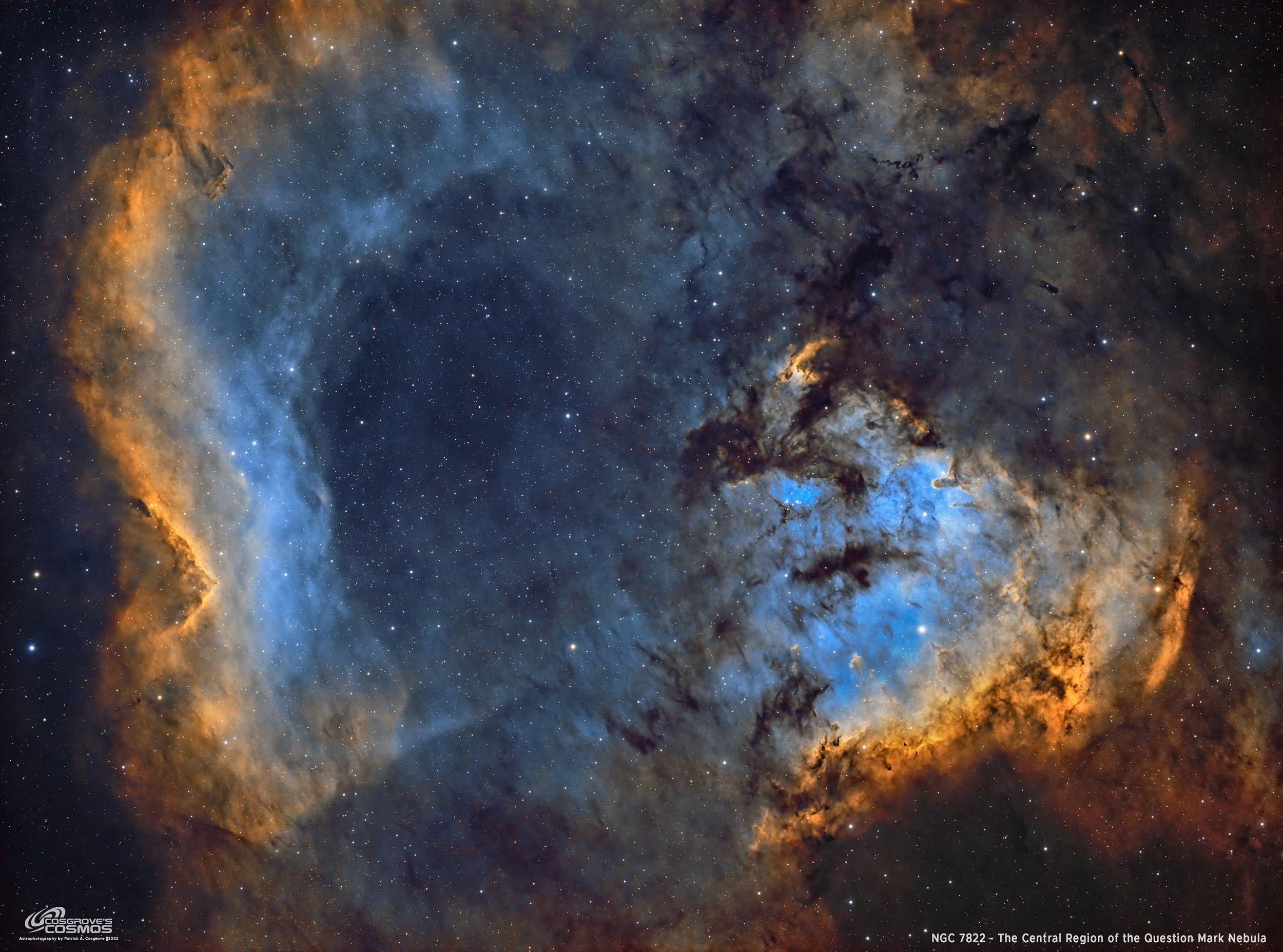
NGC 7822 - The Central Portion of the Question Mark Nebula (~14 hours in SHOrgb)
NGC 7822 is the Clamshell Nebula - located 2900 light years away in the constellation of Cepheus. This is a very large target, and with my smallest scope, I could still only fit the central portion of this complex area into the camera's field of view. This image results from just under 14 hours of integration and consists of a mix of narrowband data for the nebula and broadband RGB data for the stars.
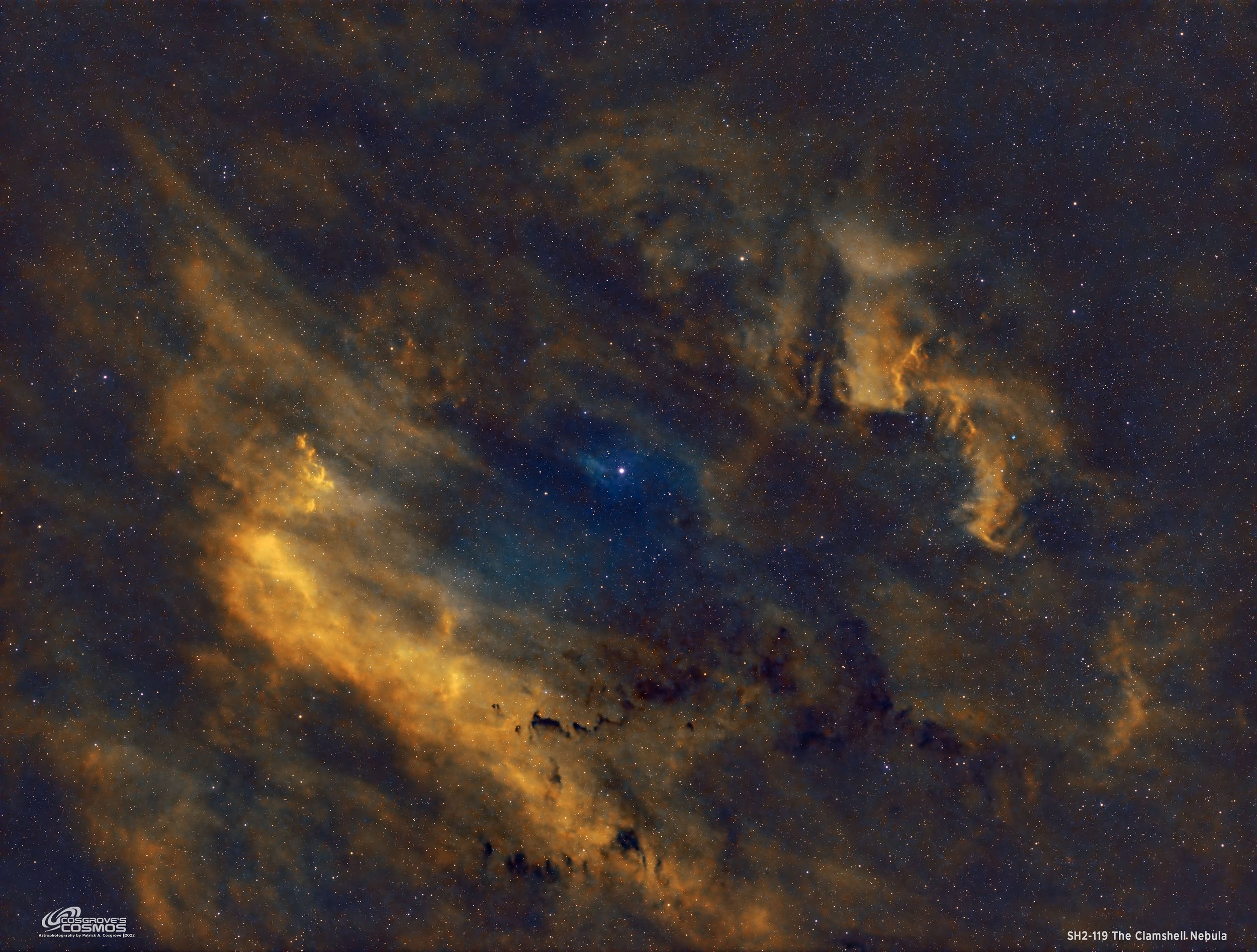
SH2-119 The Clamshell Nebula (3.5 Hours in SHO) - An Unintended Image
My second image of the year started as a disaster and motivated me to move to NINA. I spent a few nights learning NINA during the bright Moon cycle, knowing the subs would be a waste. Lo and behold, there was an image there!
This is SH2-119—The Clamshell Nebula—3.5 hours in SHO. Read the story of my trials and tribulations that led to this image!
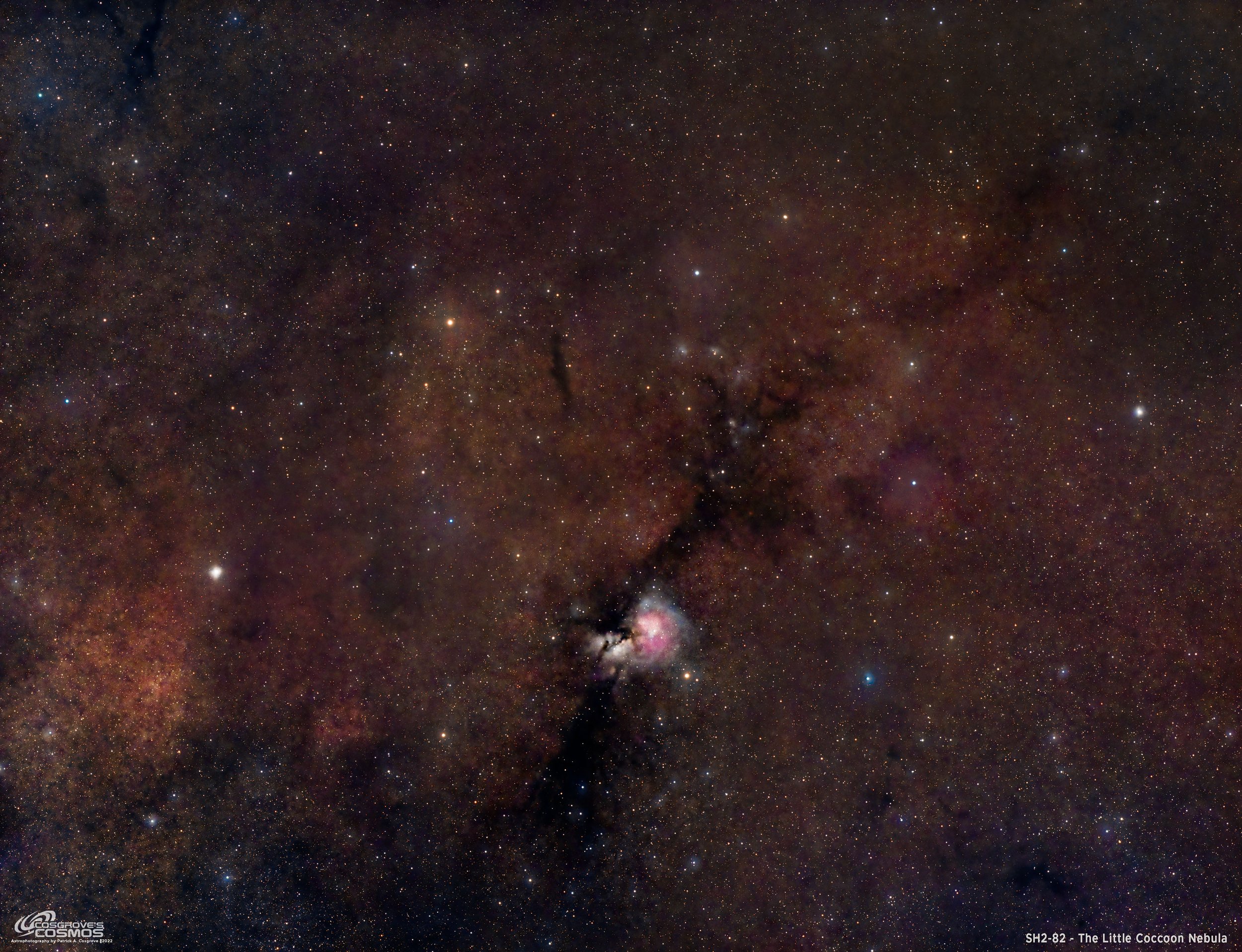
SH2-82 - The Little Cocoon Nebula - 7.3 Hours in LRGB
My first image of the year - and my first image from my new home after the move!
This is SH2-82—The Little Cocoon Nebula—7.3 hours in LRGB. Located ~4,000 light-years away in the constellation Sagitta, this emission/reflection nebula is in a rich region of the sky with a multitude of stars and dark dust lanes.
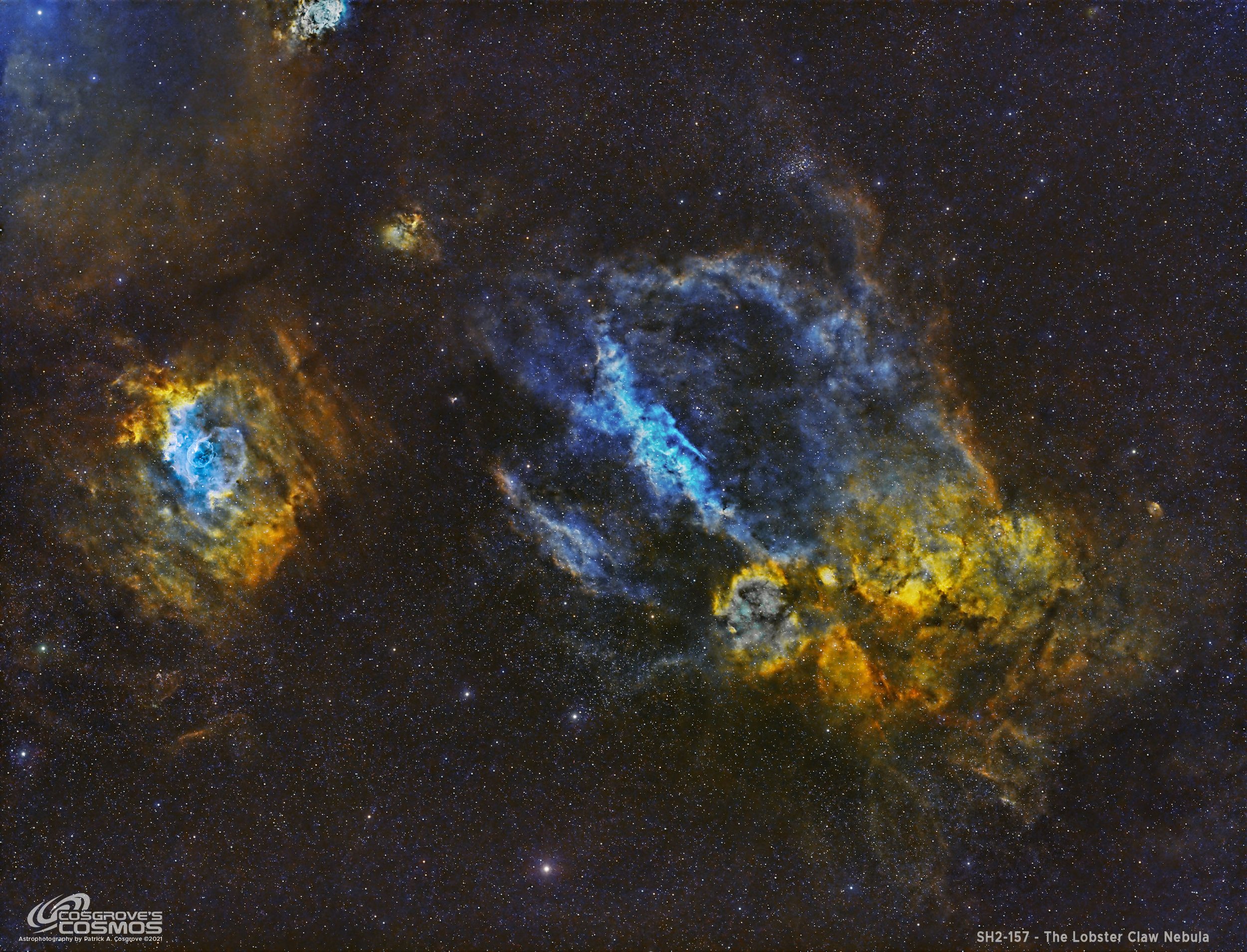
A Reprocess of SH2-157, The Lobster Claw Nebula - 4.25 hours in SHO.
SH2-157, The Lobster Claw Nebula, is located 11,000 light-years away in the constellation of Cassiopeia. This is a Reprocess Project - working with data in 2024 that was captured in 2021. I wanted to see if I could improve on this image. I think I did!
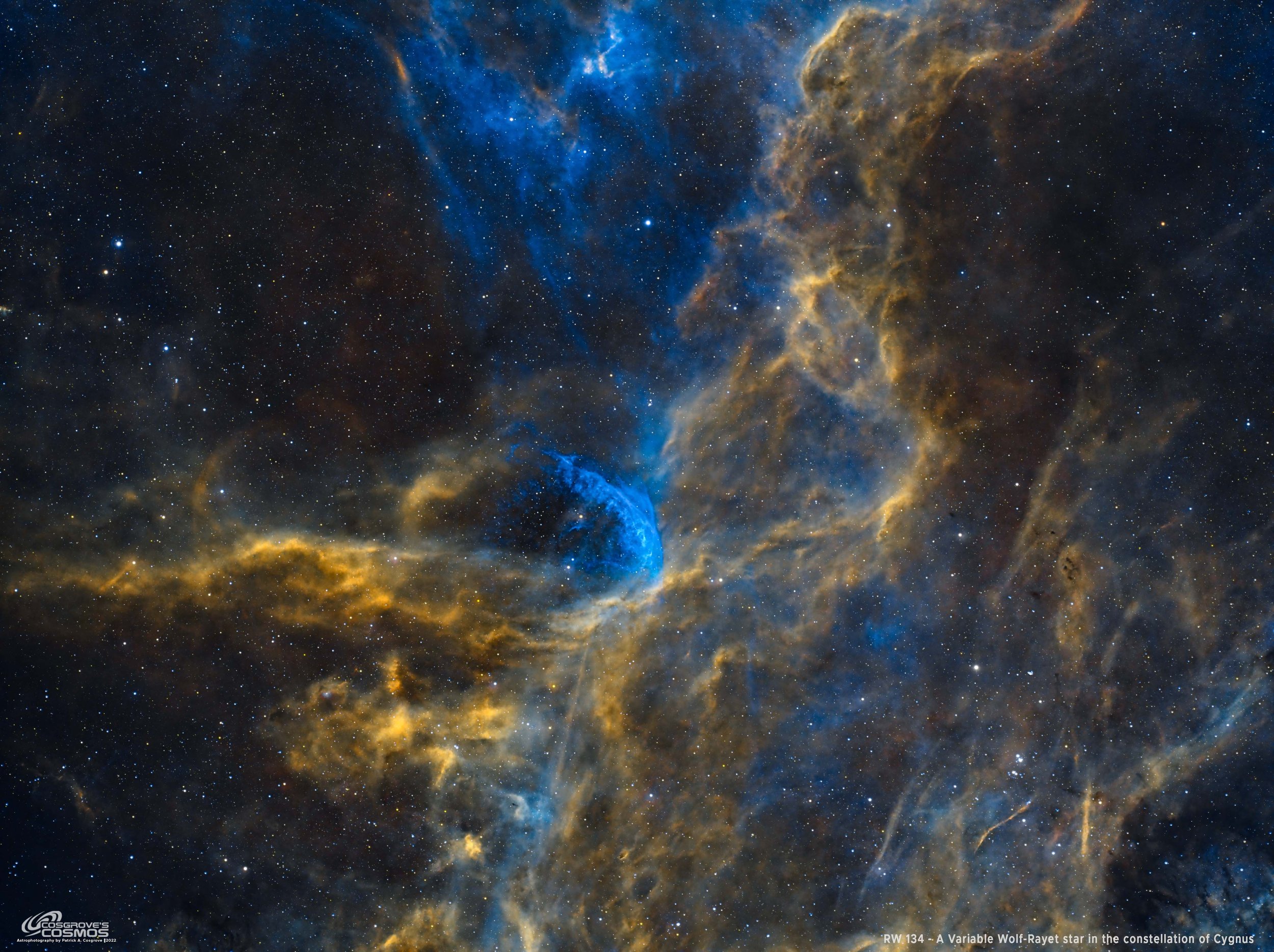
WR 134 - A Wolf-Rayet Star Region In Cygnus- 15.5 Hours in SHO
This is the third and final Imaging Project resulting from data collected during a recent - and very rare for this year - clear string of nights!
This is WR134 - a Variable Wolf-Rayet Star located 6,000 light-years away in the constellation Cygnus. This is a very interesting and rich area of the sky with a lot of objects in view. This includes WR134, WR135, and WR137 - the very first Wolf-Rayet stars ever found. These stars stood out as they had broad emission lines in their spectra instead of just absorption lines typically seen in stars.. These stares are massive and hot and have short lives.
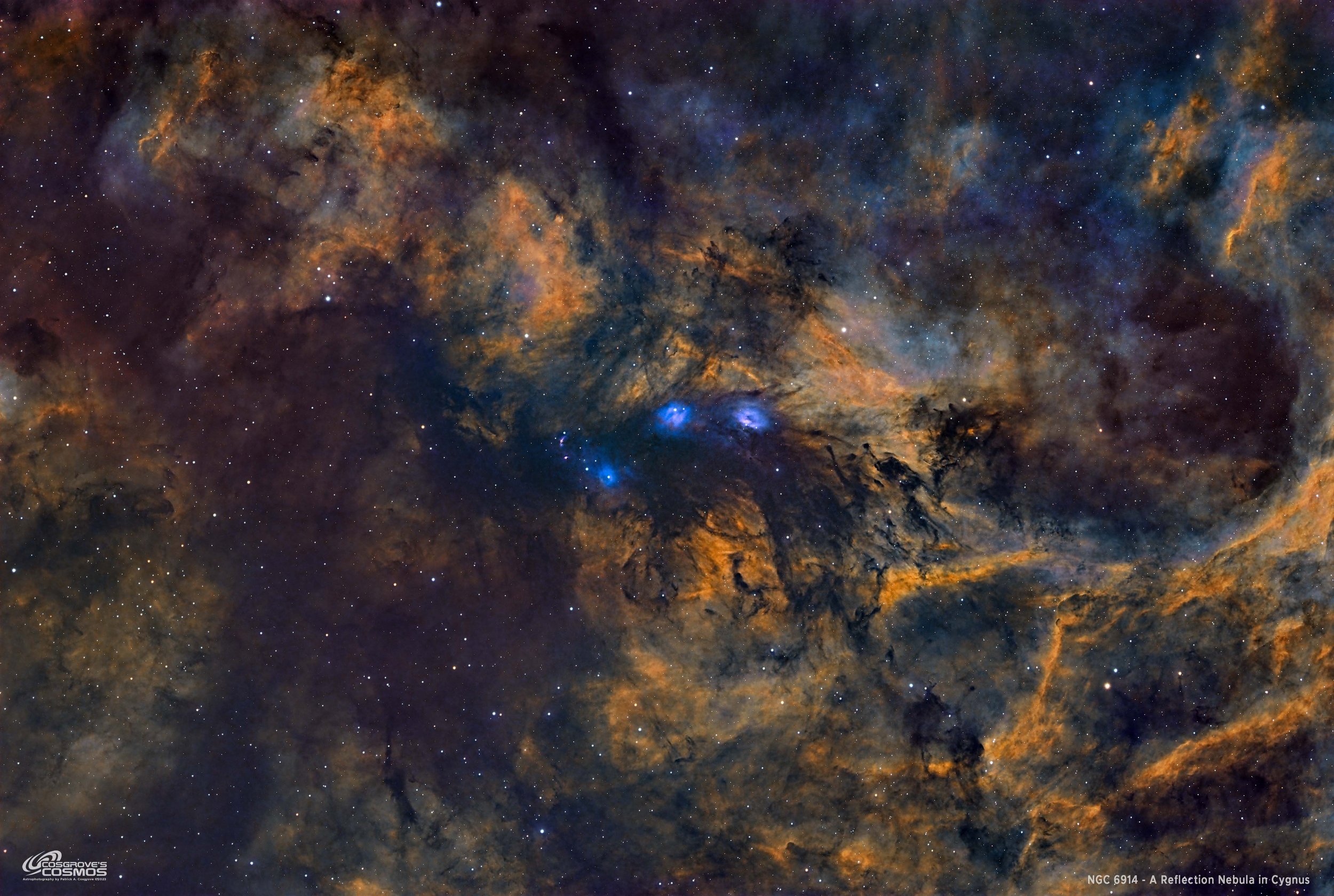
NGC 6914 - The Spider Nebula (my name!) - 14.5 Hours in SHOrgb
This is the second Imaging Project resulting from data collected during a recent - and very rare this year - clear string of nights!
This is NGC 6914 - a rich HII region located 6,000 light-years away in Cygnus. Typically shot in broadband RGB, decided to go after a narrowband version. This one resulted from 14.5 hours of SHOrgb data. The stars are broadband RGB, and the nebula is SHO Narrowband.
This object has no common name and I am proposing that we call it “The Spider Nebula!”
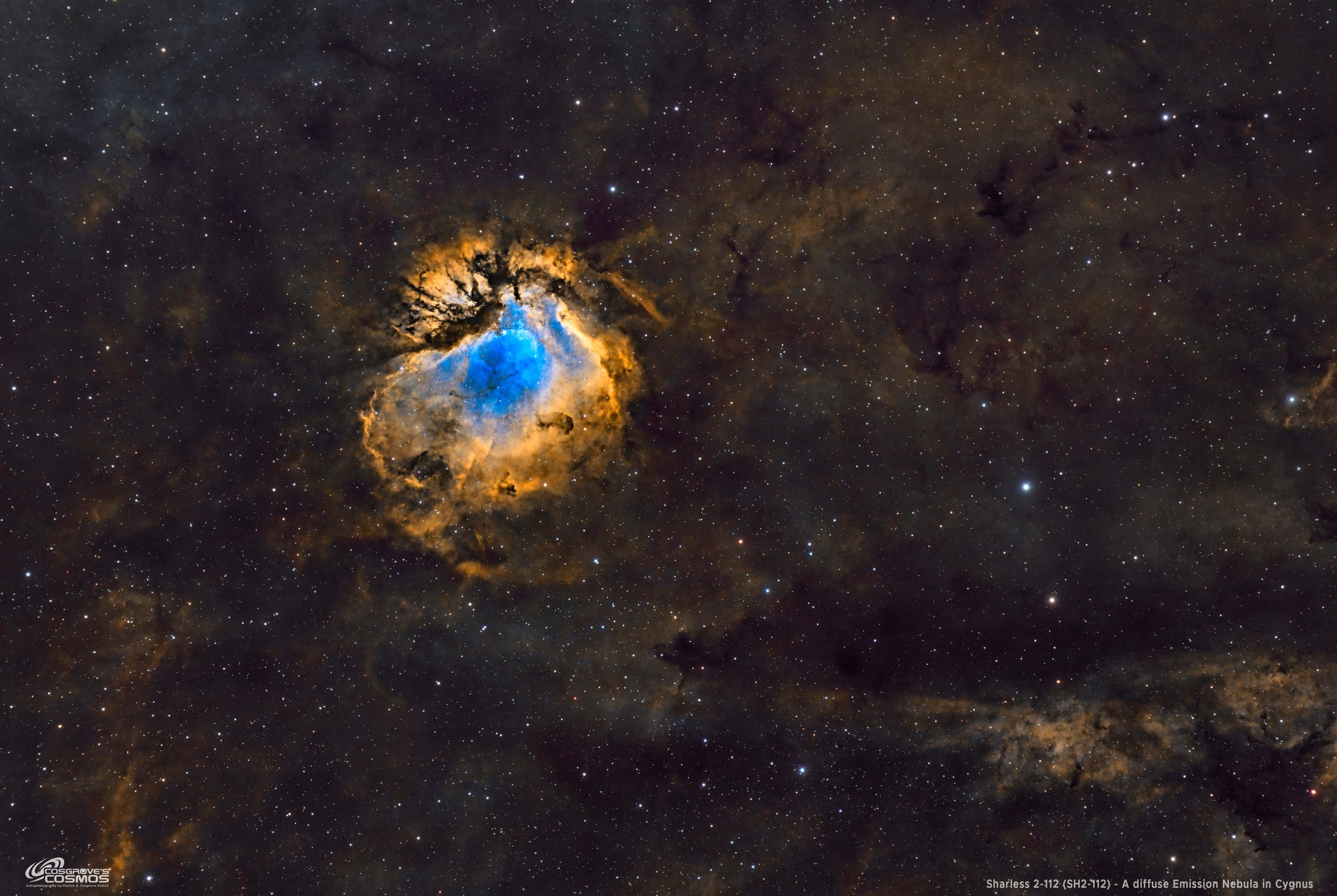
SH2-112 - A Diffuse Emission Nebula in Cygnus - 15.7 Hours in SHOrgb
Finally! Some clear nights and some new fresh from the universe photon data! This imaging project covers SH2-112 - A diffuse emission nebula located about 5,600 light-years away in Cygnus. This is the result of 15.6 hours of SHOrgb data. Not of lot of info is available about this beautiful object, but I find it fascinating to study!
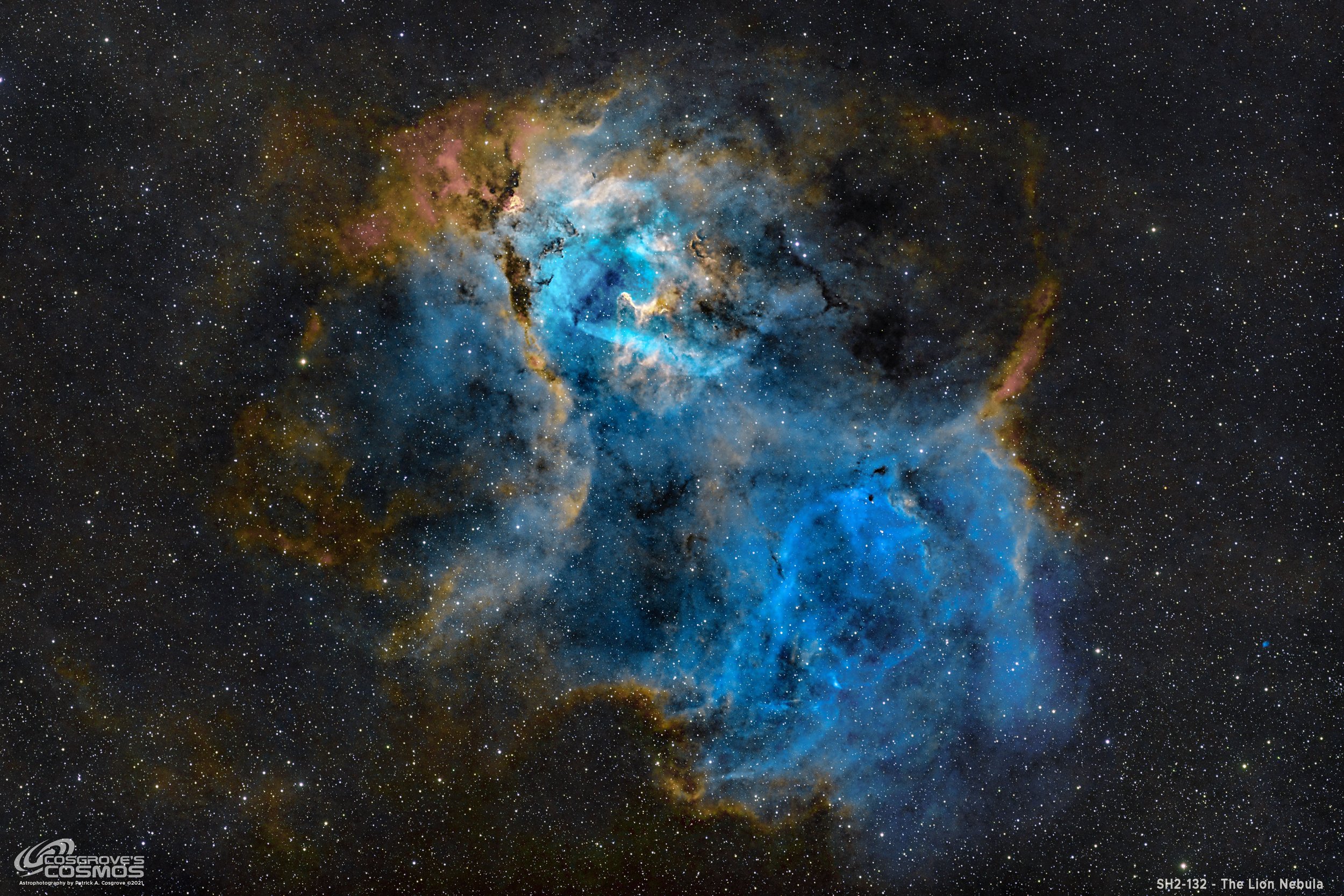
SH2-132 - A Reprocess of The Lion Nebula in SHO (8.33 hours)
This is an Image Reprocessing Project for SH2-132, also known as The Lion Nebula - whose data was originally collected in September of 2021.
The Lion Nebula is a rich HII region with star clusters, emission nebulae, and dark dust regions. Located in the southern portion of the constellation Cepheus, the Lion Nebula is roughly 10,00 light-years away in the Perseus Arm of the Milky Way Galaxy. This is a very faint and challenging target.
This image was taken on the Askar FRA400 Platform with 8.33 hours of exposure in narrowband.
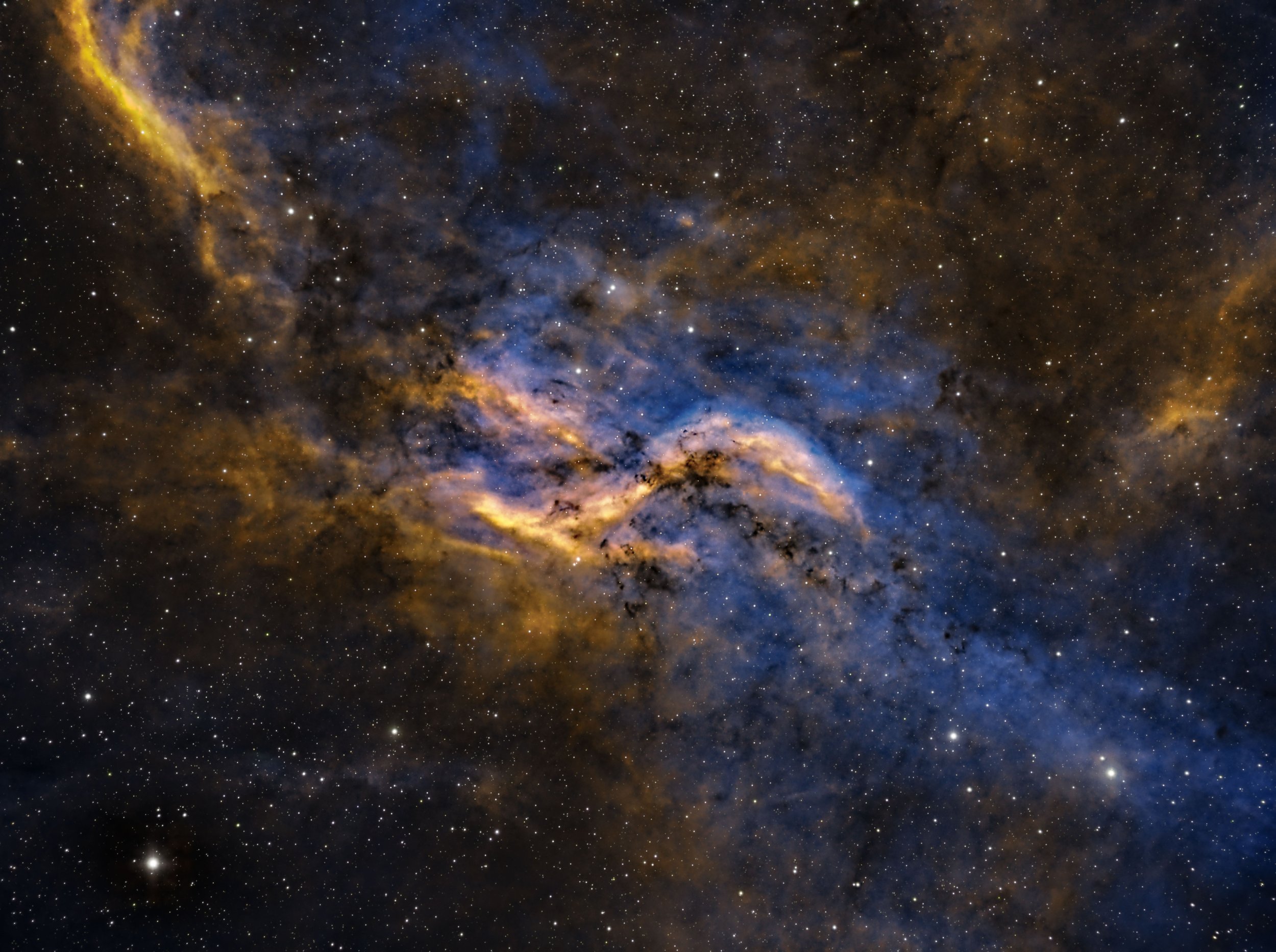
DWB 111/119 - A Reprocess of The Propeller Nebula - in SHO ~ 10 hours
This is a Reprocessing Project for data collected for DWB 111/119 in Sept of 2021.
I was never happy with the initial image. I wanted to see if I could make it better. I had a really hard time figuring out where I wanted this image to go - I think the final version is better than the original but I am not sure. You judge!
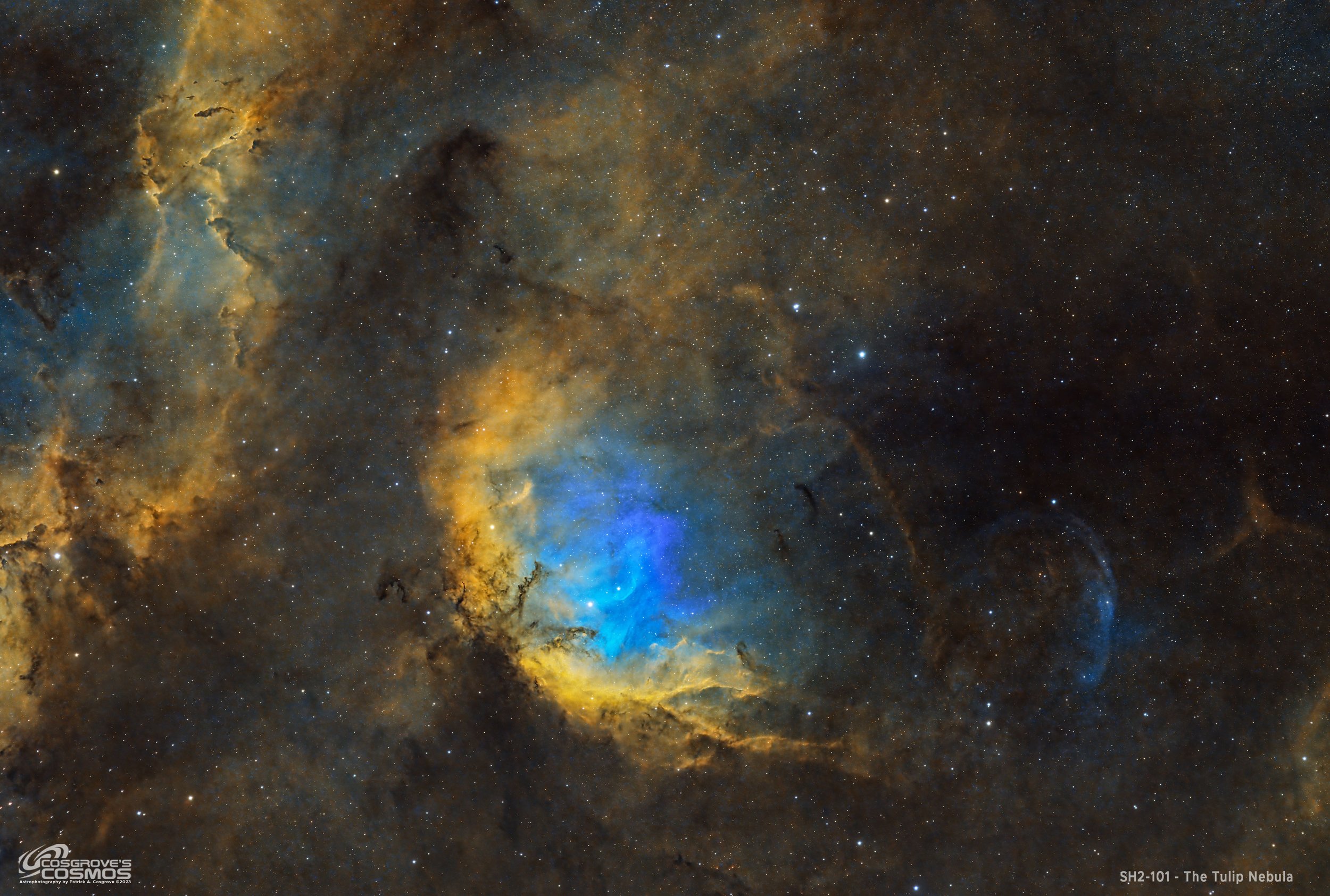
SH2-101 - A Reprocess of The Tulip Nebula - 12.8 Hours in SHOrgb
This is a REPROCESSING PROJECT for Sharpless 101 (specifically Sh2-101) also known as the Tulip Nebula. This object is located approximately 6000 light-years away in the constellation of Cygnus (The Swan). This was a 12.8-hour integration with the AP130 platform using the ZWO ASI2600MM-Pro Camera.
I was able to significantly improve the image and am quite pleased with the improvement I was able to produce - but you be your own judge of this!
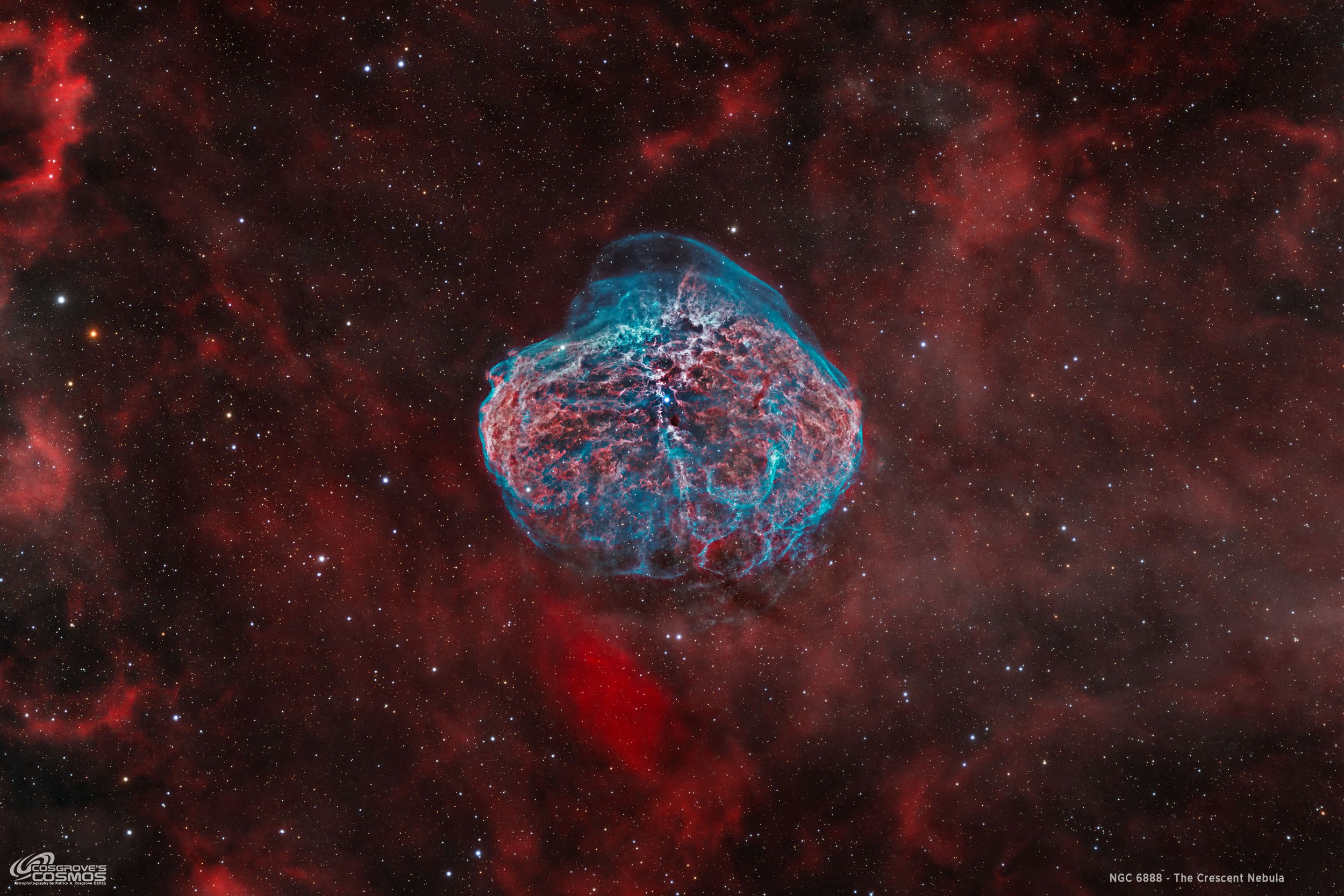
NGC 6888 - A Reprocess of The Crescent Nebula ~11 hours in HOOrgb
NGC 6888 - The Crescent Nebula is a famous emission nebula located in the constellation of Cygnus. This is a reprocessing project using image data first captured in September 2022.
SInce. I have no new data to process due to the wildfire smoke, I decided to use some new tools and processes to see if i could pull more details out from the O3 shell that surrounds the nebula.
THe resulting image show much more O3 detail - including some interesting convection cells towards the bottom of the nebula
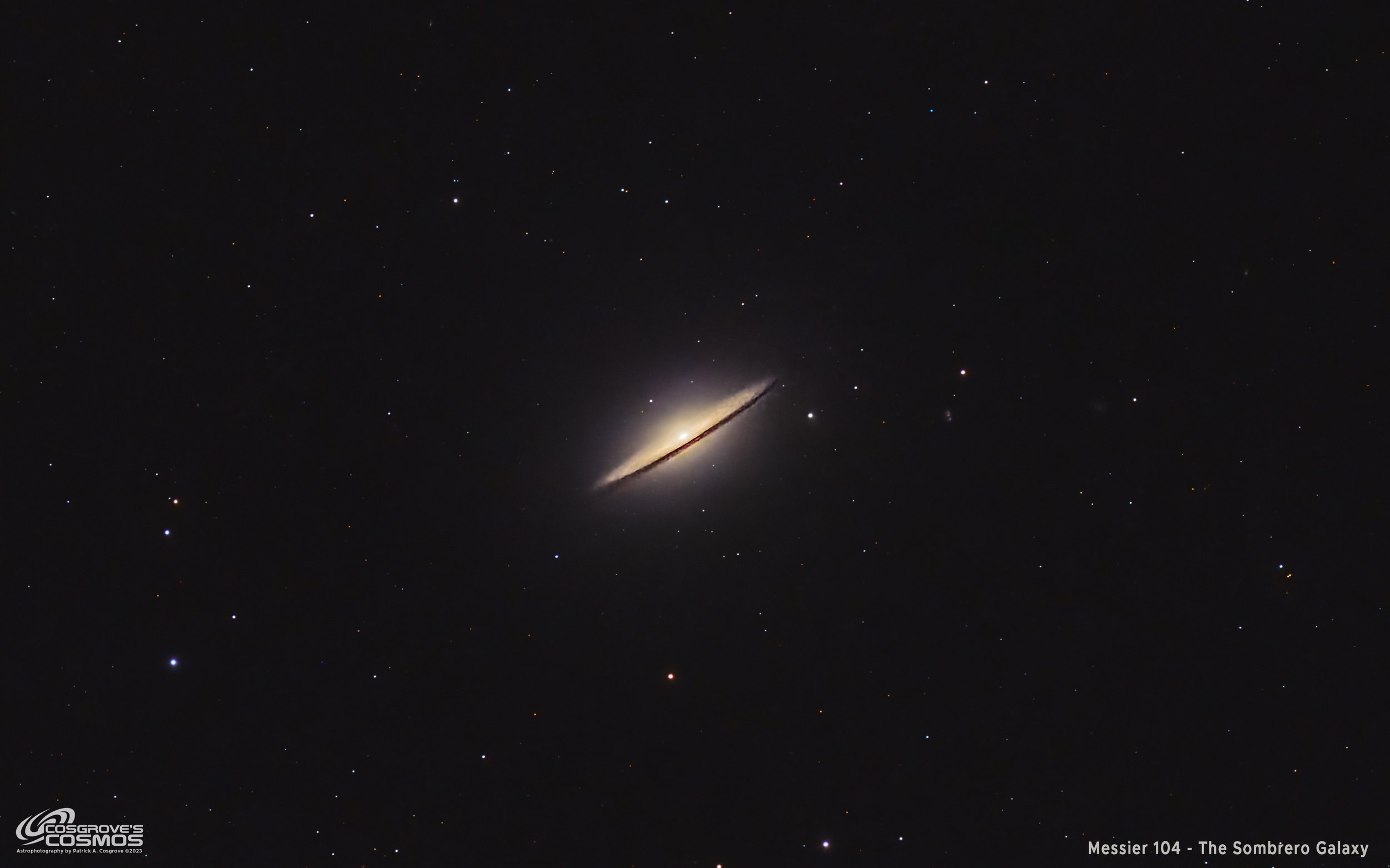
Messier 104 - The Sombrero Galaxy - 1.7 Hrs in LRGB - Too Little Time, Too Low in the Sky, Too Much Smoke…
Messier 104, also known as the Sombrero Galaxy, is a stunning sight in the night sky. Located in the constellation Virgo, this galaxy stands out due to its unique shape. With a bright central bulge surrounded by a flat disk of stars, it resembles a sombrero hat. It is estimated to be approximately 28 million light-years away from Earth and spans about 94,000 light-years across.
I have always wanted to shoot this target, but this project produced a result far below what I was shooting for as conditions were poor (smoke plumes), and integration ended up being a ridiculous 1.7 hours!
Surprisingly the resulting image is not that bad. It's not good, either.
It did better than expected because of its capable Camera. But at least I have a baseline for when I shoot this target again n the future!
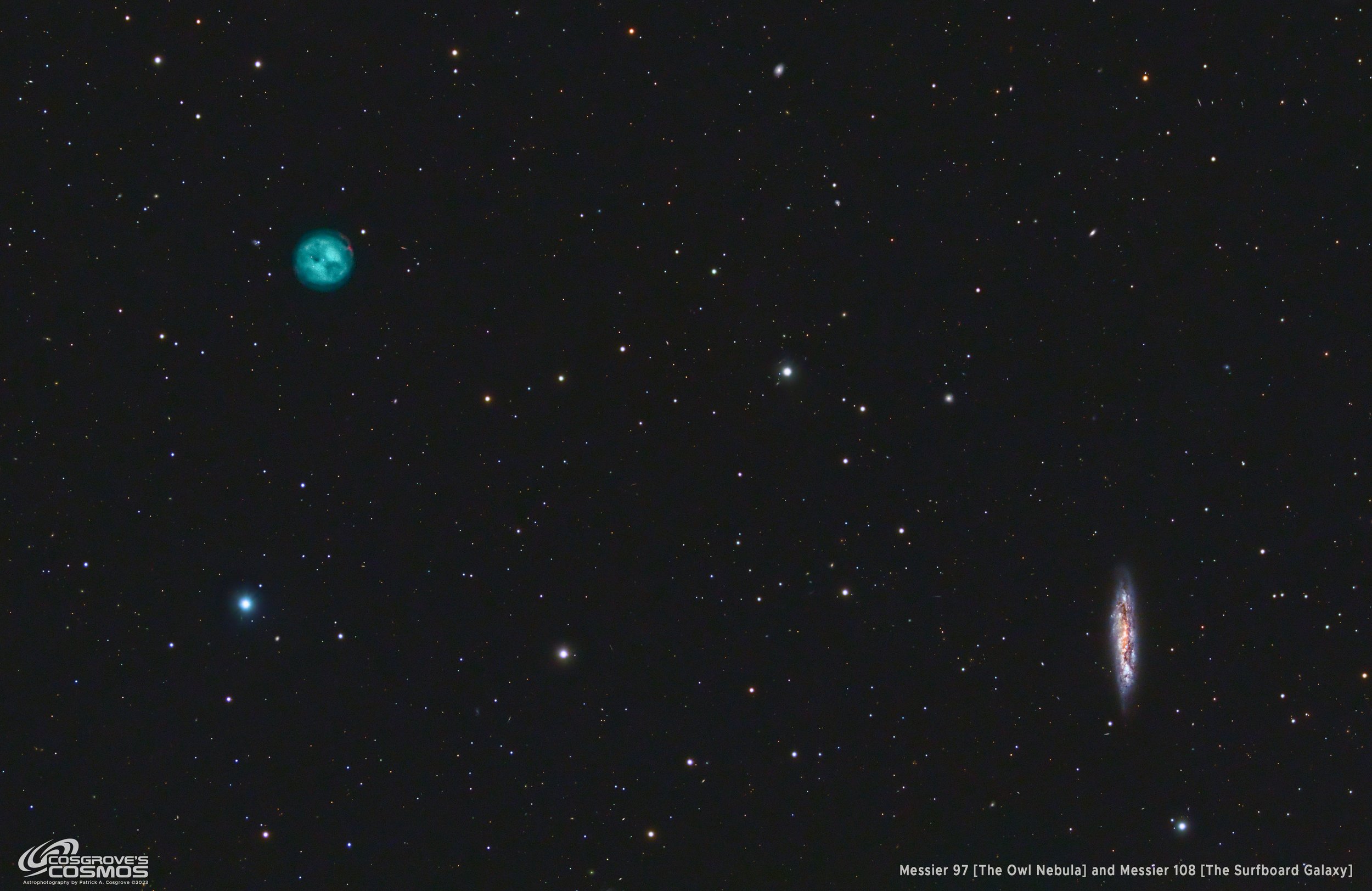
Messier 97 - The Owl Nebula and Messier 108 - The Surfboard Galaxy - 4 hours LRGB
This imaging project captures two messier objects in the same field of view!
Messier 97 is a planetary nebula better known as the Owl Nebula.
Messier 108 is better known as the Surfboard Galaxy.
This image resulted from just under 4 hours of LRGB exposure. It was shot on my William Optics 132mm Plaform after being upgraded with a flattened/0.8X Reducer and a new ZWO ASI12600MM-Pro camera.
This image was the first project I have been able to do in 2023 and was taken on two nights when the Jet Stream pushed the Smoke Plume from the Alberta Wildfires to the south of us. But this image still suffered from smoke effects!
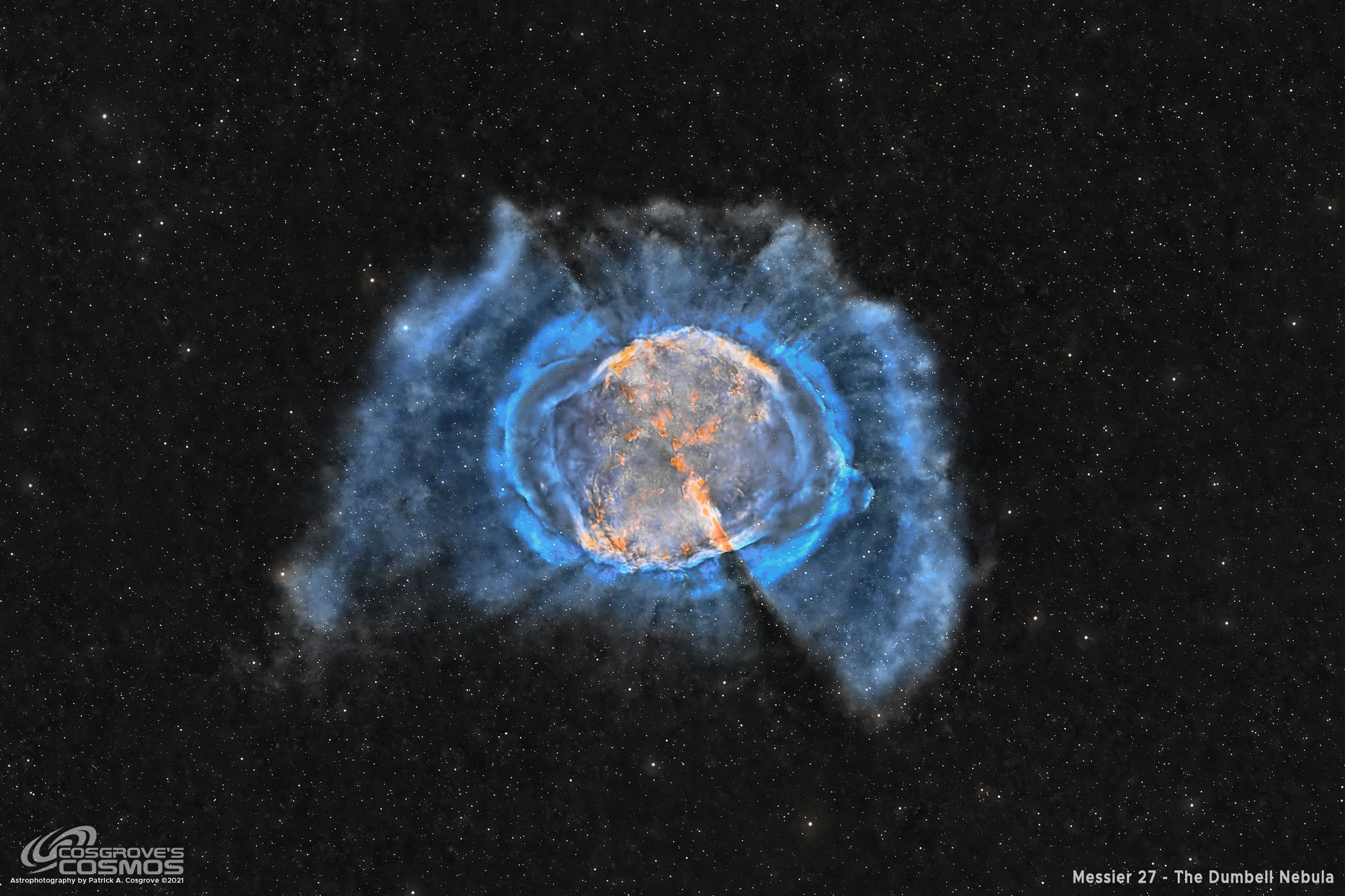
Messier 27 - A Reprocess of My Dumbbell Nebula Data in SHO - (10.25 Hours)
This imaging project is not a recapture of data for M27 - the Dumbell Nebula. Rather it is an effort to reprocess old data using new tools and new processing methods to address some concerns I had about the original image - where I thought that the stars were bloated and unsharp, and that I thought I should be able to bring out more detail in the amazing outer gas shells that narrowband imaging shows for this target.

IC 1848 - The Soul Nebula - 6.8 hours in SHO (and a Change in Horses Mid-Stride!)
IC 1848, Better known as The Soul Nebula, is an emission nebula located 6,500 light-years away in the cancellation of Cassiopeia.
This image results from 6.8 hours of narrowband data collected with my Askar FRA400 Astrograph and my ZWO classic ASI1600MM-Pro camera on the nights of Oct 20 and 22 and Nov 23 of 2022.
The first two nights were collected using the IOPtron CEM26 mount, and the third night was collected using a brand new ZWO AM5 Harmonic mount. This was the first time using the AM5, and it did an exceptional job with tracking errors reduced by 400%!
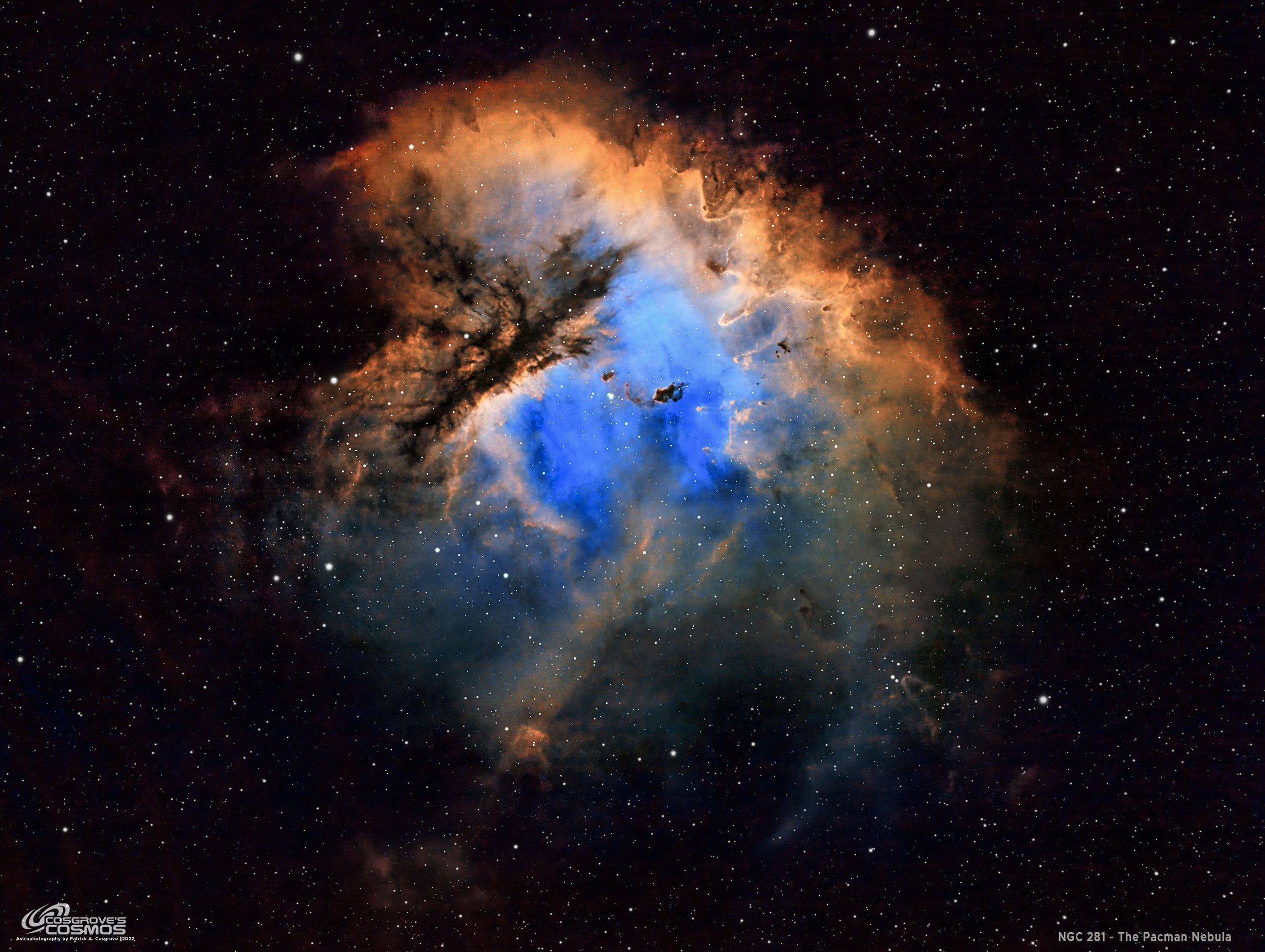
NGC 281 - The Pacman Nebula - 8 hours in SHO (Fighting a Strange Artifact!)
NGC 281, better known as the “Pacman” Nebula, is located 9,500 light-years away in the constellation of Cassiopea.
This was the second time I shot this target. This image is the result of 8 hours of narrowband data rendered in the Hubble SHO palette.
This data was collected on my Astro-Physics 130mm f/8.35 APO refractor, and a ZWO ASI2600MM-Pro camera - all mounted on my IOptron CEM 60 Mount.
This image suffered from a strange circular artifact that took the form of nested rings in the corner of the image. Dealing with this caused me to make my background sky a bit darker than I would have preferred, but I think the image has a certain amount of drama and pop because of it!

Melotte 15 - The Heart of the Heart Nebula (IC 1805) - 5.5 hours of SHO
Melotte 15, better known as the “Heart of the Heart,” is an open cluster with emission and reflection nebulae that creates an interesting structure that can be found in the center of IC 1805 - the Heart Nebula.
This rich region is located about 7,100 light-years from Earth in the constellation of Cassiopea.
This is image is the result of 5.5 hours of narrowband data collected on my William Optics 132mm FLT platform using a ZWO ASI1600MM-Prop camera.
